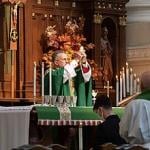from the Gospels to the Golden Girls:
The people in 68 Scarborough St., in Hartford, Conn., make an unlikely band of outlaws. The eight adults and three children live in a 6,000-square-foot house in a wealthy residential neighborhood, and pass their time with family talent shows. A photo of the crew in the Hartford Courant shows a dog in a maroon coat and a record player with actual records.
The adults in the house are longtime friends who “intentionally came together as a family,” as one of them told the Courant. They share chores and expenses. They also share, now, a cease-and-desist order: If their appeal fails, they’ll have to vacate or sell the house. They live in an area zoned for “single-family” housing, with family defined as people related by blood, marriage, civil union, or adoption. Friendship, no matter how devoted, is not a legally-recognized form of kinship.
The Courant story describes 68 Scarborough St. as a “nontraditional household,” but in fact their problem is that they’re too traditional. Up through the early modern era in Europe, it was normal for married friends to join their households, creating a common economic life and a common dwelling. These friends made a wide range of commitments: Some were deeply spiritual bonds, sealed when the two male heads of household received the Eucharist together, while others were more purely economic arrangements. But all were based on the idea that commitment, care, and common responsibility—not solely a parental or sexual relationship—makes kin.











